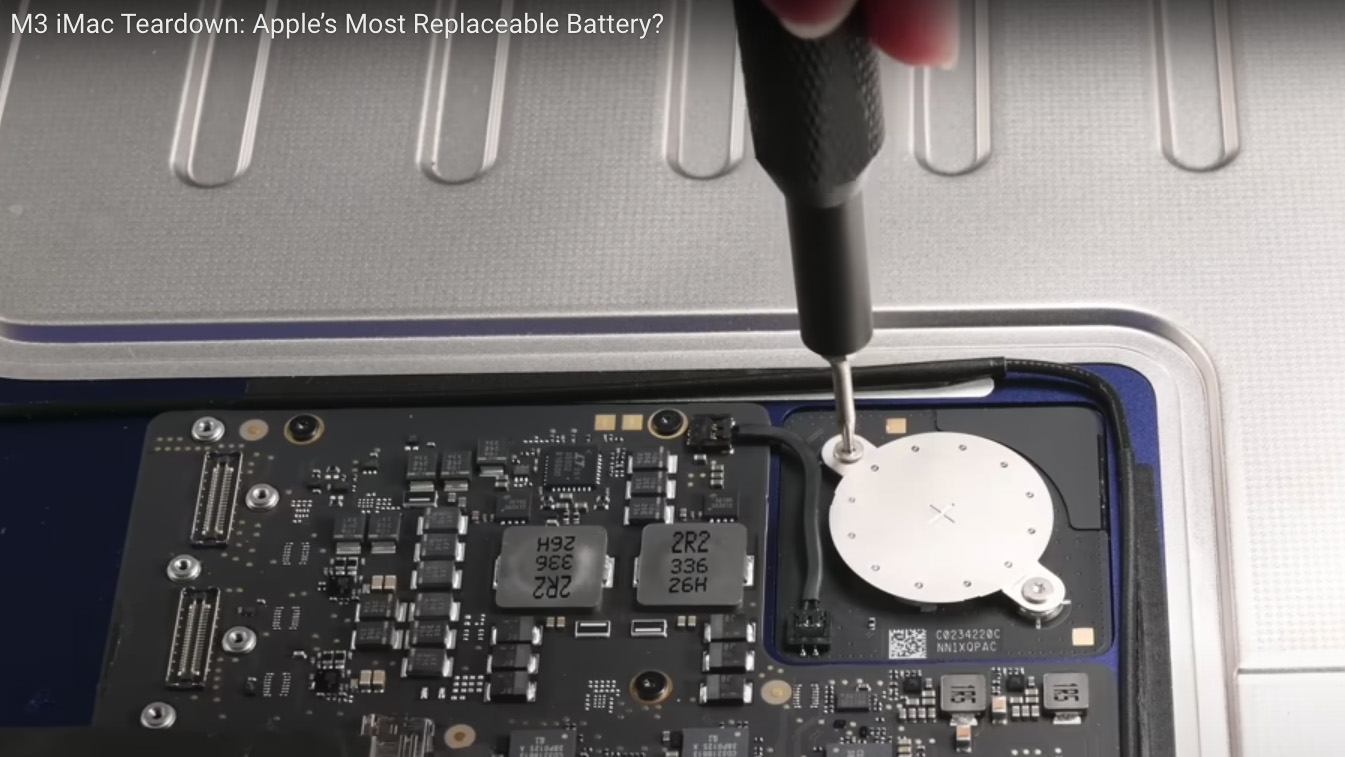iFixIt deconstructs the M3 iMac all-in-one and finds an easier-to-replace battery
iFixIt has yet to give the new iMac a repairability score

Although Apple launched its latest 24-inch M3 iMac, which uses the M3 chip, this past October, the folks at iFixIt hadn’t yet given it their teardown treatment. That is until this past Saturday.
By and large, the overall design of the M3 iMac is very close to its predecessor. In our review, we wrote, “Seen the M1 iMac? Then you’ve seen the M3 iMac—the computers, externally at least, are essentially identical.”
In the iFixIt teardown video, the reviewer noted that one of the reasons for the ultra-thin design was due to the external power supply, which houses an ethernet port. But internally, the iFixIt reviewer seemed to likewise see a lot of similarities with the M1 iMac. In fact, she said that the hardware for this all-in-one looked “very familiar.”
However, iFixIt did point out one change in the internal hardware configuration that was newsworthy, at least in their eyes: The new iMac comes with just one single-cell CMOS battery, instead of two, which is what you’d find in the predecessor. What’s more, is that in the YouTube video, iFixIt found that “the iMac battery is twice as repairable….I like the idea that the iMac’s CMOS battery is probably Apple’s most easily replaced battery.”
Will all—or any—future Apple products be easier to repair yourself?
It’s important to note, though, that iFixIt did not give the new M3 iMac a rating yet (1-10, with 10 being the easiest to repair). The previous model, however, the M1 iMac, only received a 2 on iFixIt’s repairability scale. And since the new iMac is in many ways nearly identical to the old one, many are expecting that the score would also be a 2, but we’ll have to wait on that.
Over the past few years, iFixIt has been very critical of a number of Apple’s products for being difficult to repair. For instance, in 2022, we published a story on how “iFixit has called out Apple's newly-introduced self-repair program for MacBooks, saying it makes MacBooks seem less repairable.” And in 2021, we published news on how iFixit CEO and founder Kyle Wiens had “blasted companies like Apple for obstructing the right to repair movement” and that he called out Apple for “over using non-standard parts and contractual agreements with suppliers.”
But it will be interesting to see how Apple’s 2024 line of products will score on iFixIt’s repairability scale when they hit the market.
iMore offers spot-on advice and guidance from our team of experts, with decades of Apple device experience to lean on. Learn more with iMore!

Terry Sullivan has tested and reported on many different types of consumer electronics and technology services, including cameras, action cams, mobile devices, streaming music services, wireless speakers, headphones, smart-home devices, and mobile apps. He has also written extensively on various trends in the worlds of technology, multimedia, and the arts. For more than 10 years, his articles and blog posts have appeared in a variety of publications and websites, including The New York Times, Consumer Reports, PCMag, Worth magazine, Popular Science, Tom’s Guide, and Artnews. He is also a musician, photographer, artist, and teacher.
